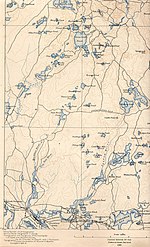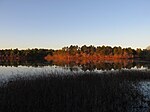Onset, Massachusetts
Census-designated places in MassachusettsCensus-designated places in Plymouth County, MassachusettsPopulated coastal places in MassachusettsSpiritualist communities in the United StatesUse mdy dates from July 2023 ... and 1 more
Wareham, Massachusetts

Onset is a census-designated place (CDP) in the town of Wareham, Massachusetts, United States. The population was 1,573 at the 2010 census.
Excerpt from the Wikipedia article Onset, Massachusetts (License: CC BY-SA 3.0, Authors, Images).Onset, Massachusetts
Storer Street,
Geographical coordinates (GPS) Address Nearby Places Show on map
Geographical coordinates (GPS)
| Latitude | Longitude |
|---|---|
| N 41.746388888889 ° | E -70.663333333333 ° |
Address
Storer Street 9
Massachusetts, United States
Open on Google Maps





